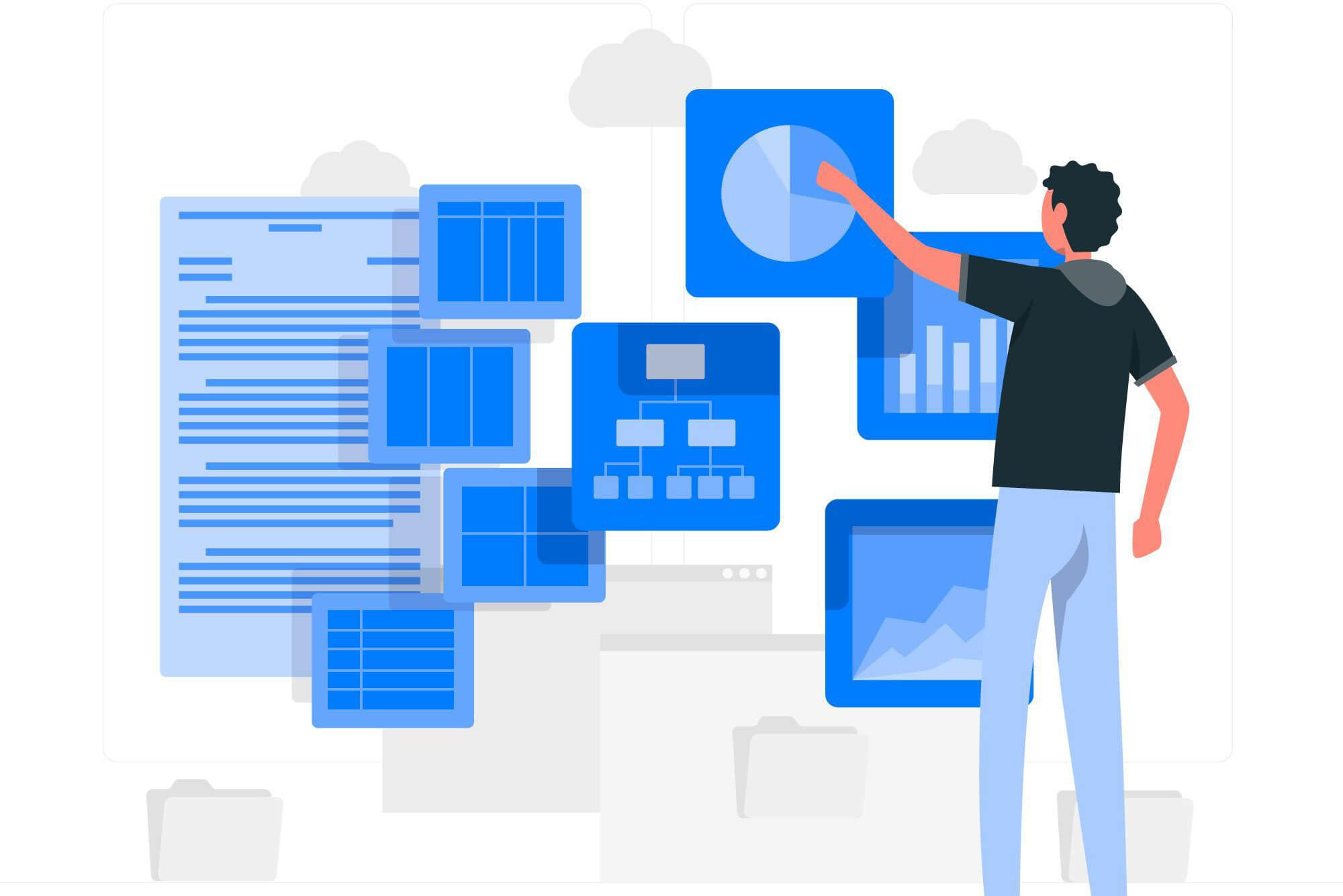A supply chain attack, also known as a value-chain or third-party attack, happens when someone breaches the system through a third party and gains access to the system and files. The third-party supplier usually provides essential services or products similar to the supply chain. The attacks break down the trust between the organization and external parties, including partners, trusted vendors, or any third-party software.
Increasing Risks Of The Supply Chain Attacks
The supply chain attack develops illegal processes to obtain complete control over the business ecosystem of its customers. Even though the public is gaining awareness of these attacks and more measures are being taken to prevent them, these attacks are increasing.
The attackers are creating new and stronger types of hardware supply chain attacks with time to overcome the measures taken to prevent them. The attackers have access to the latest tools and resources to bypass security measures.
The Business Transformation Due To Covid-19
The shutdown of the organizations due to the COVID-19 pandemic resulted in businesses turning to remote work. This meant adopting cloud services and digital methods to keep up with communication and workflow.
The growth of the business going online meant more need for cyber security. The sudden pressure on the security teams with less staff created a gap that couldn’t be picked up by cyber security, giving an advantage to the attackers.
Risk For Retailers
Retailers provide services on different mediums like online shopping, retail outlets, or mobile apps. The variety of availability exposes the store to many threats at the same time. The increased engagement of customers increases the risk of attack on the enterprise and, thus, the number of vectors for attack. Retailers should be prepared for potential threats and other security incidents.
The Surge Of Supply Chain Attacks
In the past, most superior and harmful attacks were carried out on supply networks. One of the main reasons is the cyber pandemic. With modern software development tools, hackers are developing stronger versions of the viruses, causing a rise in software supply chain risks.
How Do Supply Chain Attacks Work?
The supply chain attacks focus on companies that have blind trust in each other. They download and open each other’s files within the network or work with them as a vendor. The weakest link of the trusted chain is attacked. The attackers deliver malicious code or viruses through the supplier or vendor.
They begin by penetrating the security system through loopholes in many vendors’ myopic cybersecurity practices. Multiple attack vectors are permeated into the vendor’s ecosystem. The faulty code embeds itself in place of the host’s digital signature. This is the key to gain access to the vendor’s system.
The supply chain attackers mainly focus on the source code, update mechanism or build processes of vendor software. They infect illegitimate applications into the systems to distribute the virus.
Spread Of The Virus Through Software Patches
The vendors send the malware to their entire client network facilitated by the software patches used to communicate with third-party vendors. The infected service becomes the source of spreading the malware to its clients. It could affect thousands of computers, creating a huge threat.
The attack initiates when the virus-laden code is implanted through a software update initiated by the victim. The malicious code installs into the victim’s system by integrating the same permission as the digitally signed version of the software vendors.
Impacts Of The Supply Chain Attacks
Organizations suffer financial losses regardless of the size of the business. The breach investigation efforts, losses in business due to damaged reputation, fines, and other factors determine the losses.
The average loss suffered from a data breach in 2020 was $3.86 million, which took around 9 months to be noticed. Cybercriminals send malware infections to targeted organizations and government agencies through vulnerable supply chains.
Major Supply Chain Attacks
SolarWind Attacks
SolarWind attacks are the most common kind of Supply chain attacks that originated in Russia. The complicated attack injects the malicious code into the build cycle of the supply chain system. In the beginning, it affected around 18,000 customers, including major government organizations and agencies which were firmly secured by the cyber security tools.
Supply Chain Attack On U.S. Government
The supply chain attack on the U.S. government in 2020 is a ubiquitous example for anyone who needs a wake-up call to upgrade their security measures. The nation-state hackers seeped into the communication of the U.S. government via an update from SolarWinds, their third-party vendor. Six U.S. departments and 18,000 clients were infected around the world. This attack was termed one of the most sophisticated software supply chain attacks.
Supply Chain Attack On Target
In February, Target U.S. was attacked and suffered majorly from a supply chain attack on their system. Their trusted third-party vendor, HVAC, was the source of the chain attack through which the attackers breached data related to finances and accessed Personal Identifiable Information (PII). The supply chain attack influenced over 70 million customer data and 40 million debit and credit cards. This was an example of an email phishing attack.
Supply Chain Attack On Equifax
The attack on Equifax is an example of an attack on the financial sector. Equifax is the largest credit card agency. The attack affected 147 million of Equifax’s customers with the leak of sensitive data, including social security numbers, customers’ financial information, driver’s license numbers, birth dates, and addresses.
Supply Chain Attack On Panama Papers
During the attack, the Panamanian papers leaked over 2.6 terabytes of sensitive information, which caused fury all around the world. The breached data included the schemed tax evasion stats of over 214,000 organizations, important personalities, and high-ranking politicians.
Law firms have been the most common focus of cyber attacks because of the highly sensitive information of high-profile customers whose data is highly secretive and valuable, backed in the severs.
Supply Chain Attack Statistics
The survey conducted in 2022 revealed astonishing results. 64% of the organizations who faced the attack lacked 70% proper policies for using open source.
The speed of software development by hackers also makes it a tedious task for companies to keep up. 51% of the researchers say the fast pace of the latest software delivery makes the system vulnerable to restarting its operations after remediation.
Actions To Take In The Event Of A Supply Chain Attack
Large networks of retailers are always at risk of being compromised by the attack. They must always be prepared for such events for minimal aftereffects. The cyber security researcher should always have a response plan ready with policy-based automation to recover from the attack as much as possible.
Detect And Verify The Attack
A cross-functional team is required to outsight the response instantly when the attack is verified and confirmed not to be a false positive. The latest tools can be added to detect any kind of suspicious files entering the system or the hardware.
The team must have management personnel, security, IT, finance, and HR representatives. The team will need to find the source of its entry and the compromised devices and analyze the behavior of the malware, any stolen information, and its diffusion to other devices.
Dealing With The Virus
Once the team determines the kind of virus and the extent to which it has seeped into the system, it decides what to do next. It is largely determined by how much damage it has done to the system or how much the company can risk by halting its operation while it fixes the system.
Keeping and stopping the virus would include grounding the compromised host or system and disabling some of the features. The users will be denied access, and the entry point of the virus will be determined.
Removing the virus is imperative in the case of an attack by advanced malware or an APT. The attackers observe the reactions while resolving them and the steps taken, so the best way is usually to remove them to prevent a software supply chain attack in the future.
Removal Of The Virus
Removal of the virus is critical, even if it means stopping the operations to prevent the risk of the infection relapsing. This is particularly necessary for the APT, which moves within the network and often attacks again. The recovery from malware costs time and money.
The removal of the virus will be carried out in a few steps. All the active processes must be deactivated, and the files installed by the attack must be saved for investigations later. The sensitive and important data must be saved, and all important patches for system security must be applied.
All the accounts affected by the virus logged in the systems should be reset and updated, followed by assessing the file damage, notifying all parties, and, most importantly, disconnecting the affected host.
How To Protect From Software Supply Chain Attacks
Cyber attacks can sometimes go unnoticed but severely damage the system software if ignored. Instead of targeting whole businesses, the main targets, vendors, and suppliers make it harder to detect the virus.
Keep Privileged Accesses Secure
Cyber attackers seek accounts with privileged access throughout the system. These accounts can reach sensitive information, which is the main target of the attackers. This is the expected path to be attacked, known as the Privileged Pathway. Keeping them secured will prevent the attacker from progressing along this pathway to obtain important data.
Raise Employee Awareness
The staff is usually deceived into accepting files containing malicious codes that allow cybercriminals to gain access to the organization’s ecosystem. Emails are posed to be from trustworthy sources and get accepted easily by the employees. They then enter the system, spread malicious code, and steal internal login details.
The hunt begins for privileged accounts to break into confidential data. If the staff is educated about the standard attack methods and points out suspicious behavior, then attempts of a cyber attack can be prevented.
They can detect and report the breach attempts instead of becoming their prey. Common attack methods include phishing attacks, social engineering attacks, and ransomware attacks.
Identify Leaks In The Vendor Data Breach
Disclosure of sensitive data purposely or mistakenly ends up in data leaks that can be taken advantage of by the attackers to launch supply chain attacks. Vendors often don’t mind leaving their data exposed. Practicing third-party data leak detection solutions can give alerts of vendor data leaks and supply chain security to remediate them before they turn into supply chain attacks.
Conclusion
The supply chain attacks are increasing with the increasing dependence on online resources to work. The covid-19 pandemic has shifted the styles of working from offices to remote ways where people coordinate and stay connected through integrated cloud software. The supply chain attacks paralyze systems, and the affected business’s operations come to a halt when the virus injects into the systems and gains access to sensitive information.
The latest release of the X-Force Threat Intelligence Index in 2022 showed that 28% of the supply chain attacks were on the manufacturing industries. Its latest target has become the finance and insurance industry in five years. The rise in smart factories will show a rise in this trend in the upcoming years, and it’ll be vital to prevent supply chain attacks in the future.
This is why companies, industries, security firms, and potential targets must stay on top of their cyber threat countermeasures. Preventing such an attack before it can cause damage is much better than dealing with the aftermath.






